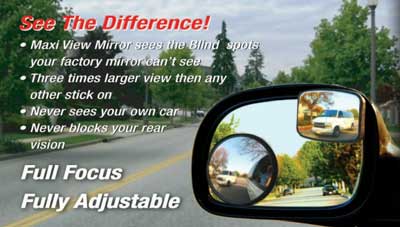
How many times have you been driving along, singing away to the songs on the radio or listening intently to the talk back station. Your mind is on what is coming from the speakers, and your eyes are on the road ahead. The car in front of you keeps slowing down for no apparent reason and after trailing behind it for the last couple of miles you have had enough of their driving and decide to pull out and switch lanes. Still with your eyes on the vehicle in front you casually check your rear vision mirror, clear. Then you check your side mirrors for anything in the lane next to you and verify that is clear as well. Putting on your indicator you merge your vehicle to the lane next to you and BAM! You don’t know what happened, where did that vehicle come from? When you checked there was no one there and you were clear to merge. The other vehicle was travelling in your vehicles blind spot and unless you took your eyes from the road to look over your shoulder or lean forward to check as much of the side mirror reflection you would not have seen them.
That was the reason that MaxiView blind spot mirrors were created. The mirrors that were on the market were inept and keeping the driver and their passengers safe. They merely reduced the size of the objects in the mirror and made it then a task for the driver to accurately estimate how far away the actual vehicle was from them. This estimate could often be inaccurate and so the number of lane changing collisions were not reduced significantly enough to call those other mirrors successful. However, MaxiView blind spot mirrors decided to reflect the image in the mirror up to three times the actual size of the object. This gives the driver more than enough time to make a decision as to whether it is safe enough to make that lane change.
